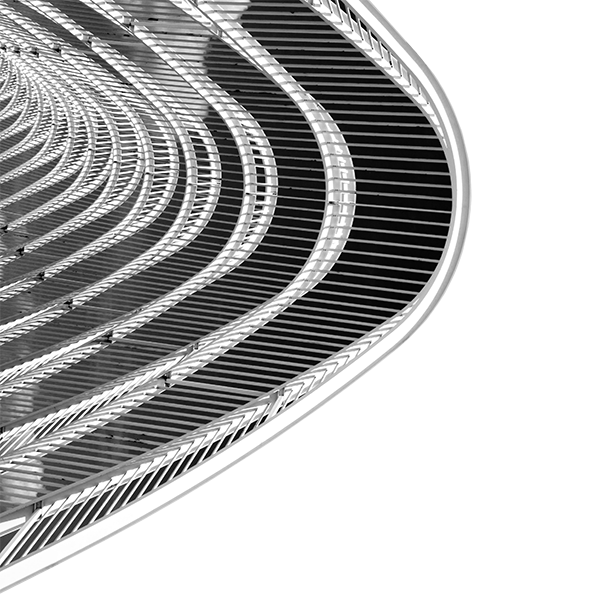HIRF and Lightning Aircraft Certification and Design
By Tim McDonald
This post describes why you would want to use an advanced simulation approach to HIRF and lightning aircraft certification and design.
The Problem
- Design Phase: Vendors and avionics team needs to know the E3 transients/levels at their device interfaces
- Certification Phase: Need to know that the E3 transients/levels at each device is within the test and design level

And the E3 external environments must be applied to the entire aircraft to determine transients/levels at the equipment interfaces.
However . . .
- The aircraft may not yet exist for testing
- If it does exist, full-scale Lightning/HIRF testing is expensive
- Full-scale testing is complicated by the ground plane and return conductor system effects (ARP 5583 requires additional simulation support to full-scale testing)
- A limited set of attachment scenarios, pins and cables can be practically assessed
- What if there are design changes after the test?
Status Quo Approach to This Problem
In the past, groups may consider using test results from a previous aircraft project. A drawback to this approach is that the materials (use of composites) and bonding design may be significantly different between various aircraft. In addition, changes in the cable harness can change the interface transients by orders of magnitude.
Another approach would be to use simple analytical methods and apply a great deal of margin. A drawback is that if the estimate with excessive margin exceeds the existing COTS avionics equipment test levels, it results in a great cost, weight impact and schedule delay.
There are other CAD tools that may address the issue. However, they often suffer from poor CAD interoperability, lack validation heritage and cannot handle a full aircraft size. In addition, without harness co-simulation, the prediction may be incorrect by orders of magnitude.
Proposed Solution: EMA3D
EMA3D is a mature code that has been continuously under development since 1978 and has been applied to hundreds of systems. EMA3D is optimized for system level E3 including lightning and HIRF. EMA3D overcomes the limitations of other solvers noted above.
EMA3D CAD Interoperability
The EMA3D CAD environment includes features including CAD healing, automatic translation, and defeaturing. EMA3D can import CATIA V4/V5, STEP, ProE, and almost all major formats.
EMA3D has tools to quickly defeature and adjust geometry to capture important EM features of the model.
Actionable Predictions
The EMA3D work flow is described in the above flow chart. The distinguishing factor of EMA3D is the ability to provide transient predictions in a form that is directly useful by the certification or design program. The DO-160 levels are a concrete output from MHARNESS. An example of these predictions is shown below:

EMA3D and MHARNESS can provide lightning and HIRF results that are directly comparable to DO-160 categories
Validation Heritage
Correlation between simulation and measurement is challenging. However, EMA3D has proven itself over many years on several important FAA certification programs. The McDonald Douglass MD-80 verification is shown below.

The EMA3D simulation of the MD80 correlated so well with the measurement lightning transients that the FAA allowed the MD90 to forgo the usual lightning indirect effects testing on the full aircraft.
Next, a validation for a GE engine controller is shown in the HIRF frequency band.

These validation results for a GE FADEC for HIRF frequencies shows the correspondance between measurement (green) and test (red)
Another classic validation of EMA3D is on one of the first carbon fiber fuel tanks. The validation is recorded in SAE ARP5415A. The impressive correlation of EMA3D and measurements is noted as a guide for future tank certification programs.
EMA3D is listed in the SAE Aerospace Recommended Practices guidelines as a method of determining component level lightning indirect effects transients (SAE ARP 5415 pg 152). Recent commercial, military, and NASA programs each have similar validation programs with successful correlation between simulation and measurement.
Recently, EMA has improved our cable harness solver to achieve impressive correlation with a DO-160-style tabletop measurement of bulk current injection. You can read more about the details here.
EMA Demonstrates the Correlation of an MHARNESS Simulation and a DO-160-style Cable Measurement
Integrated MHARNESS
Co-simulation with MHARNESS is now possible in EMA3D. In the lightning environment, MHARNESS gives transients at the pin level with greater accuracy. In HIRF simulation, integrated MHARNESS is essential in order to obtain the correct result. The code considers mutual interaction of wire harnesses with aircraft structure and other wire harnesses. This interaction is critical for accurate simulations. EMA3D version 4 has this simulation capability with the purchase of an MHARNESS license.
Simulation Platform Size
EMA3D is parallel with extremely efficient scaling on computational clusters. The cluster version of EMA3D has been successfully used by EMA and major aerospace partners to simulate entire aircraft in the lightning and HIRF environments.
Benefits of Simulation as a Method of Compliance
- Cost Benefits – $2.2 M savings estimate based on MD-90
- Schedule Benefits – Can begin effort now in parallel with design work
- Accuracy Benefits – No return conductor system to alter the results as in a lab test
- Synergies with Design Optimization and Parametric Studies – Full range of studies available with complete model
- Future Savings for Aircraft Modifications and Projects – Once the simulation approach is validated, it can be used for future projects
Synergies with other E3 Environments
An advantage of using EMA3D is that lightning and HIRF analysis can be performed on the same model. Other electromagnetic environmental effects (E3) that may also use EMA3D include:
- P-static
- Avionics design
- Antenna placement and design
- Electrostatic discharge
- Fuel system lightning protection
Proposed Solution: EMA3D
EMA3D improves on accuracy compared to using previous aircraft measurements, results from aircraft with different harness runs, unsuitable analysis or full-scale measurements. EMA3D overcomes limitations of other simulation tools. When combined with expert users, EMA3D provides predictions of aircraft in E3 environments with good correlation to measurement











